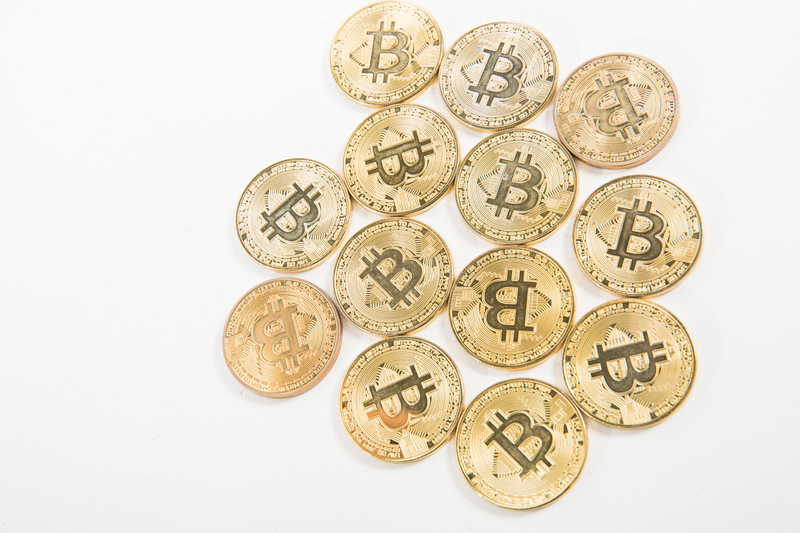GSR Secures UK FCA Approval, Expands Regulated Crypto Services
GSR has obtained dual regulatory approval in the UK and Singapore, broadening its crypto trading services for institutional clients.

Bitcoin is currently crossing a very important support level, which was much awaited by long-term investors all over the world. More specifically, on August 2nd, the popular cryptocurrency broke through a 3-year support level and is eyeing $14,000 USD as the next strong resistance.

We are clearly in a bull market. Companies from all industries are jumping into the opportunity to profit from the increase in demand while thousands of new users join exchanges daily, trying to understand how to purchase Bitcoins. But what has caused this positive market outlook?
In this article, we will look into all the driving forces that bring Bitcoin in the spotlight once again, and what this means for the future.
The uptrend we are experiencing at the moment results from the combination of different factors. Let’s take a look at each one of them separately and explain their relevance.
The mainstream media is giving more attention to Bitcoin due to a series of events that occurred over the past few months. These include the effect of the coronavirus pandemic on the Bitcoin price, the interest of the US government to control and regulate the crypto space, as well as the halving that occurred just a few months ago.
And while popular media channels like CNBC can play a determining role in mainstream adoption, less popular channels are also booming. Podcasts, Youtube channels, as well as email newsletters and cryptocurrency blogs are all experiencing an increase in traffic. An interesting example is Anthony Pompliano’s “The Pomp Podcast”, which has quickly grown to be one of the most popular crypto & fintech shows in the world.
Yesterday, The Pomp Podcast officially hit 10 million downloads/views year-to-date in 2020.
Still can’t believe it has grown this big.
Appreciate every single person who has ever listened or watched an episode 🙏🏽
— Pomp 🌪 (@APompliano) August 6, 2020
The 4th halving of Bitcoin occurred in May. The event resulted in the halving of mining rewards, dropping the total of newly minted Bitcoin from 12.5 to 6.25 per transaction block. When looking at historical events it is easy to see how the event has had an effect on the increase of demand over the past few months. Not only has the term “Bitcoin halving” attracted four times more Google queries compared to the previous halving, but people have also become more aware of how inflationary and deflationary assets work.
It is important to remember that the slashing of Bitcoin’s supply does not directly correlate with the increase in demand. All assumptions that the event will be a driving force for Bitcoin to climb back to its all-time high are based on historical patterns following the previous halvings.
The coronavirus pandemic has helped the public understand that government-based fiat money is unstable. From tens of trillions of dollars in quantitative easing measures to the uneven distribution of $1200 cheques, it is evident that the global economy is in desperate need of a “facelift”.
As a result of the government’s inability to handle crisis situations, a large number of institutional investors have started to invest in Bitcoin as an alternative store of value, and Congress claims it has become stronger and more important than ever before.
Decentralized Finance (DeFi) is a relatively new concept that allows entrepreneurs to redevelop traditional financial tools and instruments in a decentralized manner. This much-needed upgrade in the finance industry brings a solution to the problem of funds misuse and centrally controlled cryptos like Tether (USDT).
Bitcoin is the first and most important DeFi application. It is controlled by a large network of nodes (computers) without a central point of authority. While it is somewhat limited in its applications, it has become a catalyst for the development of other popular DeFi projects like Dai, Compound, and Dharma. Together, these applications open the doors to a new, decentralized economy in which the users are the decision-makers, and the process is more democratic.
The most important driving force to an increased Bitcoin price is simply the improvement of onboarding processes. Nowadays, buying Bitcoin is easier and safer than ever due to the improvement of UX/UI and government regulations.
Companies like Binance have spent the last 3 years building a new investment product for the crypto market that allows new users to utilize saving, staking, borrowing, and even futures trading for different cryptocurrencies Naturally, this allows people to do more things with their coins than simply holding onto them in hopes of future growth in price.
Adding to that, most exchanges nowadays have more streamlined processes when it comes to communication and problem resolution — an issue, which drove a lot of investors away during the latest bull market. Many people probably remember how Binance had to disable new registrations for more than 3 months to “catch up” with their load of work.
#Binance Will Temporarily Disable New User Registrationshttps://t.co/y4QfLw13uz
— Binance (@binance) January 4, 2018
It certainly seems like Bitcoin is getting ready to make some big moves. Long-term HODLers are prepared for a new bull market in which Bitcoin could reach new all-time highs. Financial analysts estimate that Bitcoin could reach as much as $288,000 USD per coin if it follows the past-halving patterns that it experienced previously. All we can do is wait and see if the predictions play out in their favour.
GSR has obtained dual regulatory approval in the UK and Singapore, broadening its crypto trading services for institutional clients.
Metaplanet currently owns 1,762 Bitcoin and aims to boost its holdings by 467%, reaching a total of 10,000 Bitcoin.
El Salvador agreed with the IMF to make Bitcoin adoption voluntary and reduce its government's involvement in Bitcoin-related initiatives.
Ohio has become the third US state to propose legislation for incorporating Bitcoin reserves into the state treasury.